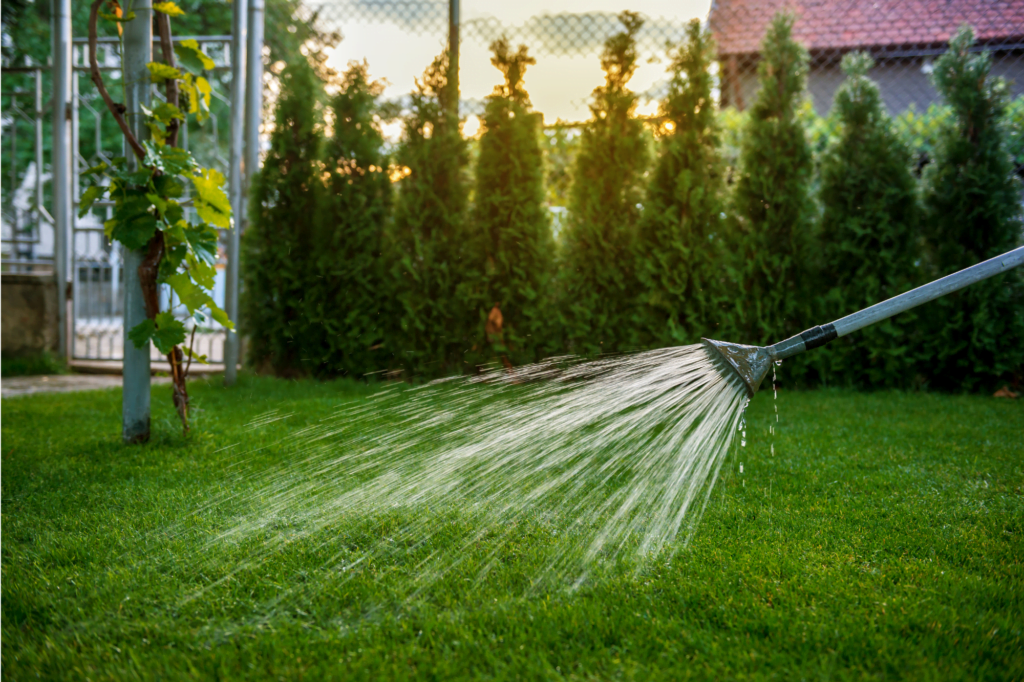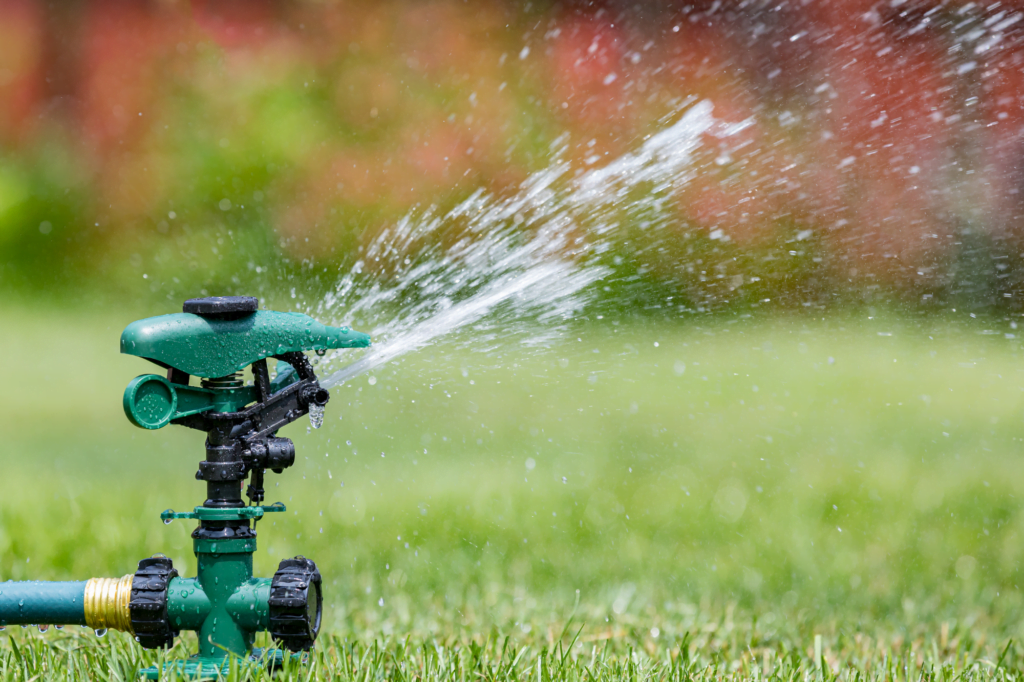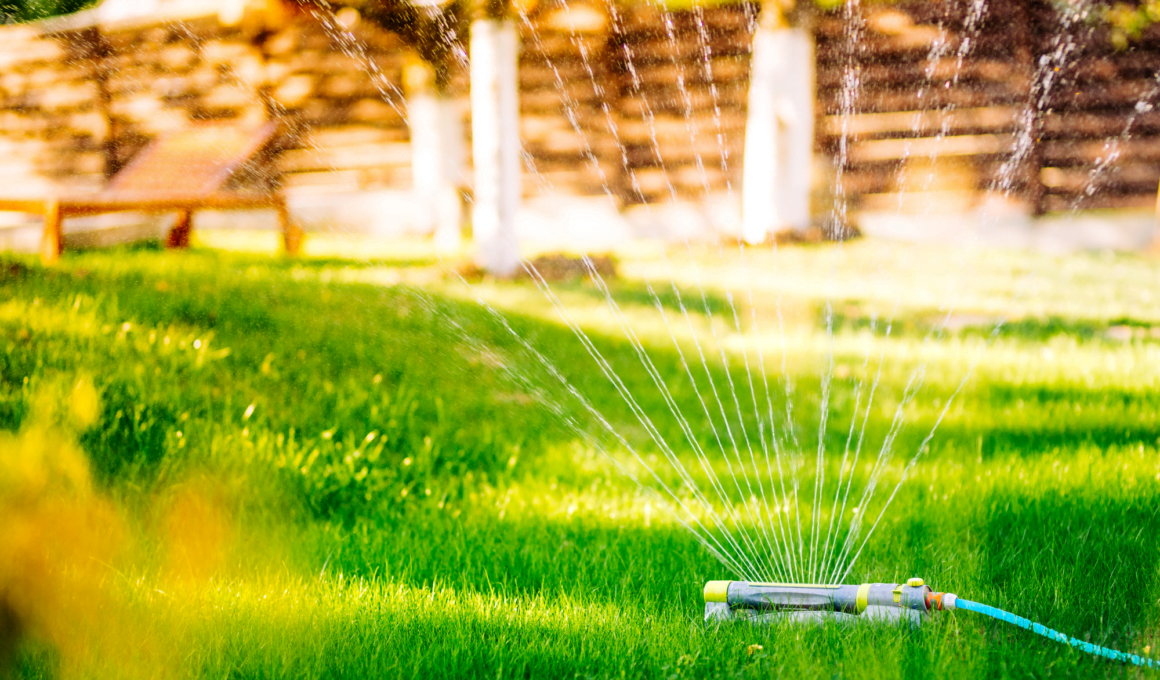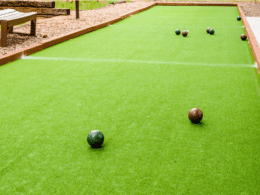Quick Summary
- Water deeply and infrequently to promote strong root growth
- Adjust watering schedule based on rainfall and soil moisture
- Water in the early morning or late evening to minimize evaporation
- Regularly monitor lawn health and adjust watering schedule accordingly
Understand Your Lawn’s Watering Needs
It’s crucial to grasp the watering requirements of your lawn during the summer. Proper lawn maintenance is essential to keep your grass healthy and vibrant. Understanding the importance of soil health is the key to determining how often you should water your lawn. To ensure your lawn receives the right amount of water, you must consider the type of soil you have. Sandy soils drain quickly and require more frequent watering, while clay soils retain water for longer periods. Balancing the watering frequency is vital to prevent overwatering or underwatering. To maintain a healthy lawn, you should water deeply and infrequently. This encourages the grass roots to grow deep into the soil, making them more resilient to drought. Aim to water your lawn every 3-4 days, providing around 1 inch of water each time. However, be mindful of the weather conditions. If it’s particularly hot or dry, you may need to increase the frequency or duration of watering. Remember, overwatering can lead to shallow root growth and the growth of weeds and diseases. Proper lawn maintenance and understanding the importance of soil health will help you determine the best watering schedule for your lawn, ensuring it remains lush and beautiful all summer long.Water Deeply and Infrequently
To maintain a lush and vibrant yard during the sweltering months, it’s key to prioritize deep and infrequent watering. When it comes to watering frequency for summer lawn maintenance, it’s important to strike the right balance. While it may be tempting to water your lawn every day, this can actually do more harm than good. Overwatering can lead to shallow root growth, making your lawn more susceptible to drought and disease. Instead, aim to water your lawn deeply and infrequently. This means giving your lawn a good soaking, allowing the water to penetrate the soil and reach the roots. This encourages the roots to grow deeper, making your lawn more resilient and better able to withstand dry spells. Depending on the type of soil and grass you have, watering once or twice a week should be sufficient.
When watering, it’s important to do it in the early morning or late evening when temperatures are cooler. This helps prevent evaporation and allows the water to be absorbed more effectively. Additionally, make sure to adjust your sprinklers so that they aren’t wasting water on sidewalks, driveways, or other non-lawn areas.
By following these guidelines and watering deeply and infrequently, you can ensure that your lawn stays healthy and vibrant throughout the summer months. So take the time to water your lawn properly, and enjoy a beautiful and thriving yard all season long.
While it may be tempting to water your lawn every day, this can actually do more harm than good. Overwatering can lead to shallow root growth, making your lawn more susceptible to drought and disease. Instead, aim to water your lawn deeply and infrequently. This means giving your lawn a good soaking, allowing the water to penetrate the soil and reach the roots. This encourages the roots to grow deeper, making your lawn more resilient and better able to withstand dry spells. Depending on the type of soil and grass you have, watering once or twice a week should be sufficient.
When watering, it’s important to do it in the early morning or late evening when temperatures are cooler. This helps prevent evaporation and allows the water to be absorbed more effectively. Additionally, make sure to adjust your sprinklers so that they aren’t wasting water on sidewalks, driveways, or other non-lawn areas.
By following these guidelines and watering deeply and infrequently, you can ensure that your lawn stays healthy and vibrant throughout the summer months. So take the time to water your lawn properly, and enjoy a beautiful and thriving yard all season long.
Water in the Early Morning
You should avoid watering your lawn during the hottest part of the day. Instead, opt for watering in the early morning, which allows the grass to dry before nightfall. By following this practice, you can prevent the risk of fungal diseases and promote healthy growth in your lawn.Avoid watering during the hottest part of the day
During the scorching summer months, it’s best to steer clear of watering your lawn when the sun is at its peak. This is because watering during the hottest part of the day can lead to excessive evaporation, which means your lawn won’t receive the full benefit of the water you’re using. To ensure the health and safety of your lawn, it’s important to consider the watering frequency and practice water conservation. Instead of watering during the hottest part of the day, aim to water your lawn in the early morning or late afternoon when the temperatures are cooler. This will allow the water to penetrate the soil and reach the roots more effectively, promoting a strong and resilient lawn. By avoiding watering during the hottest part of the day, you’ll not only conserve water but also help prevent any potential harm to your lawn.Early morning watering allows the grass to dry before nightfall
Watering your lawn in the early morning allows the dew to evaporate and the grass to dry before nightfall. This is important for maintaining a healthy lawn during the summer months. However, if you prefer to water your lawn in the evening, there are also benefits to consider. Evening watering can help cool down the grass after a hot day and prevent the soil from drying out too quickly. It can also reduce the risk of evaporation, ensuring that more water reaches the roots of your lawn. However, it’s important to note that watering at night can create a damp environment, which may increase the chances of fungal diseases. To prevent this, avoid overwatering and make sure the grass has enough time to dry before nightfall. Overall, whether you choose to water in the early morning or evening, the key is to find a routine that works best for your lawn’s needs.| Benefit | Explanation | Risk |
|---|---|---|
| Cooler grass | Evening watering helps cool down the grass after a hot day. | Increased risk of fungal diseases due to prolonged dampness. |
| More water reaches roots | Watering at night reduces evaporation, ensuring more water reaches the roots. | Overwatering can create a damp environment and increase the risk of fungal diseases. |
| Prevents soil from drying out | Evening watering prevents the soil from drying out too quickly. | Grass may remain damp overnight, increasing the risk of fungal diseases. |
| Conserves water | Watering in the evening reduces evaporation, allowing more water to be absorbed by the lawn. | Overwatering can lead to water waste and potential fungal diseases. |
Use a Watering Schedule
You should set a regular watering schedule for your lawn based on its specific needs. Take into account factors like rainfall and temperature when adjusting the schedule. By following a consistent watering routine, you can ensure that your lawn receives the proper amount of water it requires to thrive.Set a regular watering schedule based on your lawn’s needs
To ensure your lawn stays healthy and vibrant throughout the summer, it’s important to establish a regular watering schedule that meets its specific needs. Watering frequency and optimal watering times are crucial factors to consider. In the summer months, it’s generally recommended to water your lawn two to three times a week. However, this can vary depending on factors such as soil type, grass type, and weather conditions. It’s best to water deeply and infrequently rather than shallowly and frequently. This encourages deep root growth and helps your lawn withstand drought conditions.
As for optimal watering times, it’s best to water your lawn early in the morning or late in the evening to minimize water evaporation and maximize absorption.
By setting a regular watering schedule based on your lawn’s specific needs, you can ensure it receives the right amount of water to thrive and stay healthy.
Watering frequency and optimal watering times are crucial factors to consider. In the summer months, it’s generally recommended to water your lawn two to three times a week. However, this can vary depending on factors such as soil type, grass type, and weather conditions. It’s best to water deeply and infrequently rather than shallowly and frequently. This encourages deep root growth and helps your lawn withstand drought conditions.
As for optimal watering times, it’s best to water your lawn early in the morning or late in the evening to minimize water evaporation and maximize absorption.
By setting a regular watering schedule based on your lawn’s specific needs, you can ensure it receives the right amount of water to thrive and stay healthy.
Consider factors such as rainfall and temperature when adjusting the schedule
Considering factors such as rainfall and temperature can greatly impact the health and resilience of your lawn, ensuring it remains lush and vibrant throughout the season. These factors play a crucial role in determining how often you should water your lawn in the summer. One important factor to consider is rainfall. Keep track of the amount of rainfall your lawn receives each week. If there has been a significant amount of rainfall, you may not need to water your lawn as frequently. On the other hand, if there has been little to no rainfall, you will need to water your lawn more often to compensate for the lack of natural moisture. To measure rainfall accurately, you can use a rain gauge, which will give you an idea of how much water your lawn has received. By adjusting your watering schedule based on factors like rainfall and temperature, you can ensure that your lawn receives the appropriate amount of water to thrive during the summer months.Use Proper Irrigation Techniques
To properly irrigate your lawn, use sprinklers or an irrigation system to ensure even water distribution. This will help prevent certain areas from receiving too much water while others are left dry. Avoid overwatering your lawn, as this can lead to issues such as shallow root growth and lawn diseases. Additionally, be mindful of water runoff to prevent wasted water and potential damage to your landscape.Use sprinklers or irrigation systems for even water distribution
With sprinklers or an irrigation system, your lawn will receive a consistent and even distribution of water during the summer months. Proper maintenance of your sprinklers is essential to ensure their efficiency and avoid water waste. Regularly check for any leaks, clogged nozzles, or broken parts that may affect the water flow. Additionally, consider water conservation techniques to minimize water usage while keeping your lawn healthy. For example, adjust the sprinkler settings to avoid watering sidewalks or driveways. Water your lawn during the early morning or late evening when temperatures are cooler, reducing evaporation. Furthermore, consider installing rain sensors or smart irrigation controllers to optimize water usage based on weather conditions. By utilizing sprinklers or an irrigation system and following these water conservation techniques, you can maintain a lush and healthy lawn while promoting safety and sustainability.Avoid overwatering or creating water runoff
To prevent overwatering and water runoff, make sure to adjust your sprinkler settings to avoid saturating the soil and creating puddles in your yard, which can lead to water wastage and potential damage to your plants and lawn. By ensuring that your sprinklers are set to distribute water evenly across your lawn, you can prevent water waste and conserve this precious resource. Overwatering not only wastes water but also increases the risk of fungal diseases and root rot. By conserving water, you not only save money on your water bill but also contribute to the overall sustainability of your community. Additionally, preventing water runoff helps to protect your yard from erosion and keeps harmful chemicals from flowing into nearby water sources. So, remember to adjust your sprinkler settings and be mindful of preventing water waste for the health and safety of your lawn and the environment.Is the Frequency of Watering Your Lawn Different in the Summer?
The watering frequency for lawns should be adjusted during the summer months due to increased heat and evaporation. Lawns require more water as the temperature rises to maintain their lush and green appearance. It’s crucial to water deeply and less frequently to promote deep root growth and prevent water runoff. Regularly monitoring the moisture level of your lawn is essential to ensure optimal hydration throughout the summer season.
Monitor Soil Moisture
To ensure that your lawn stays healthy during the summer, it’s important to monitor the moisture level of the soil regularly. You can easily do this by using a moisture meter or by performing a simple touch test. By checking the soil moisture, you can determine if your lawn needs watering or if it’s already adequately hydrated.Check the moisture level of the soil regularly
Regularly check the moisture level of your soil to ensure your lawn stays healthy and vibrant throughout the summer. It’s important to monitor soil moisture because it directly affects the health of your lawn. Too much or too little water can lead to problems like fungal diseases or drought stress. By keeping an eye on the moisture level, you can take timely action and prevent these issues from occurring. To make it easier for you, here’s a table that shows different moisture levels and what they mean for your lawn:| Moisture Level | Description |
|---|---|
| Dry | Soil is dry to the touch and crumbles easily |
| Moist | Soil feels slightly damp and holds together when squeezed |
| Wet | Soil is saturated and water can be squeezed out |
Use a moisture meter or perform a simple touch test
To ensure your lawn stays healthy during the summer, it’s crucial to check the moisture level of the soil regularly. But how can you accurately determine if your lawn needs watering? Well, you have two excellent options: using a moisture meter or performing a simple touch test. A moisture meter is a valuable tool that provides accurate readings of the moisture content in your soil. It takes the guesswork out of watering and helps you avoid over or under-watering, which can harm your lawn. On the other hand, a touch test involves feeling the soil with your hand to assess its moisture level. While it may not be as precise as a moisture meter, it can still provide useful insights. Here are four benefits of using a moisture meter or performing a touch test:- Preventing overwatering, which can lead to fungal diseases.
- Avoiding underwatering, which can cause your grass to turn brown and dry.
- Saving water by only watering when necessary.
- Promoting a healthy root system by providing the right amount of moisture.









